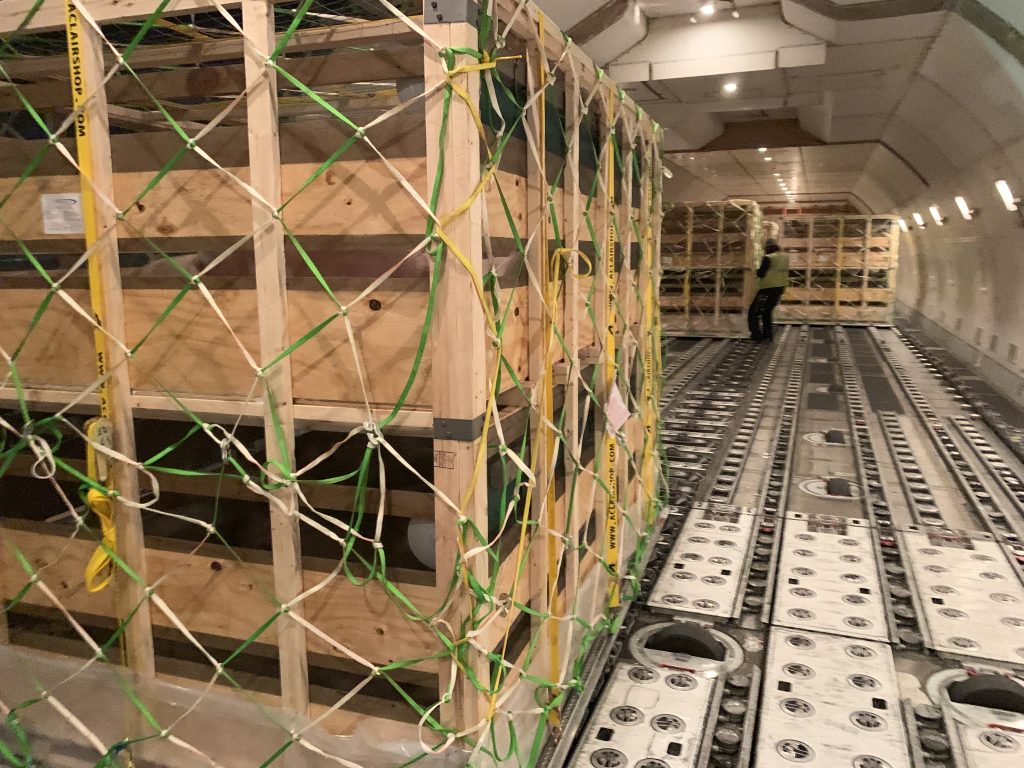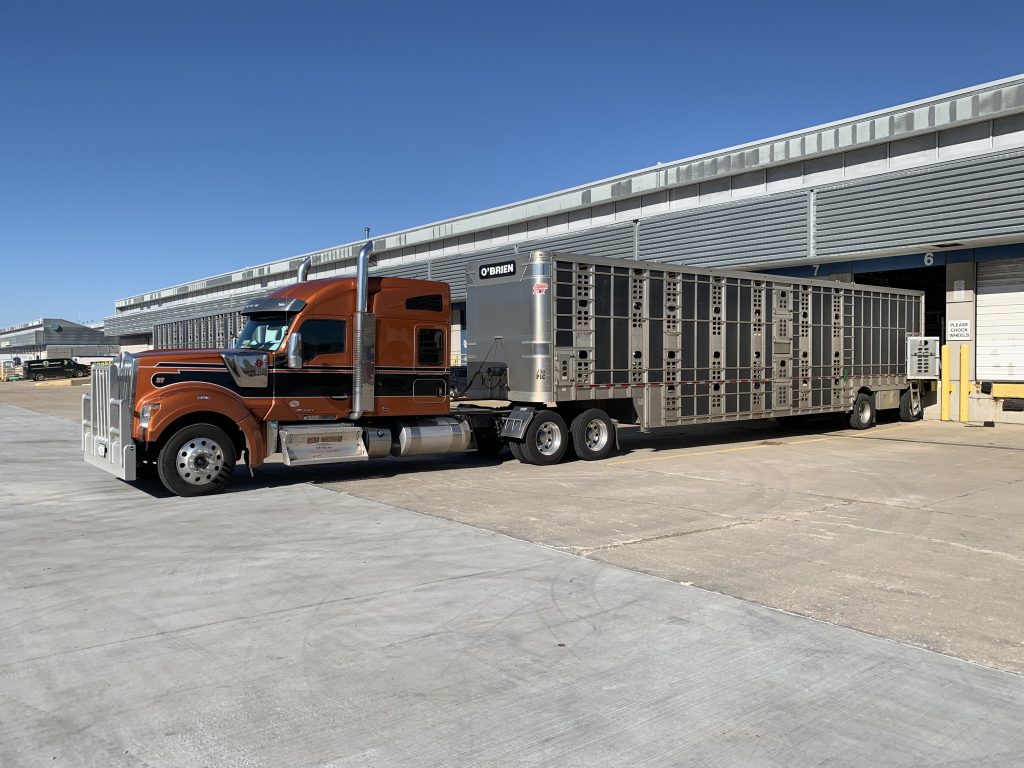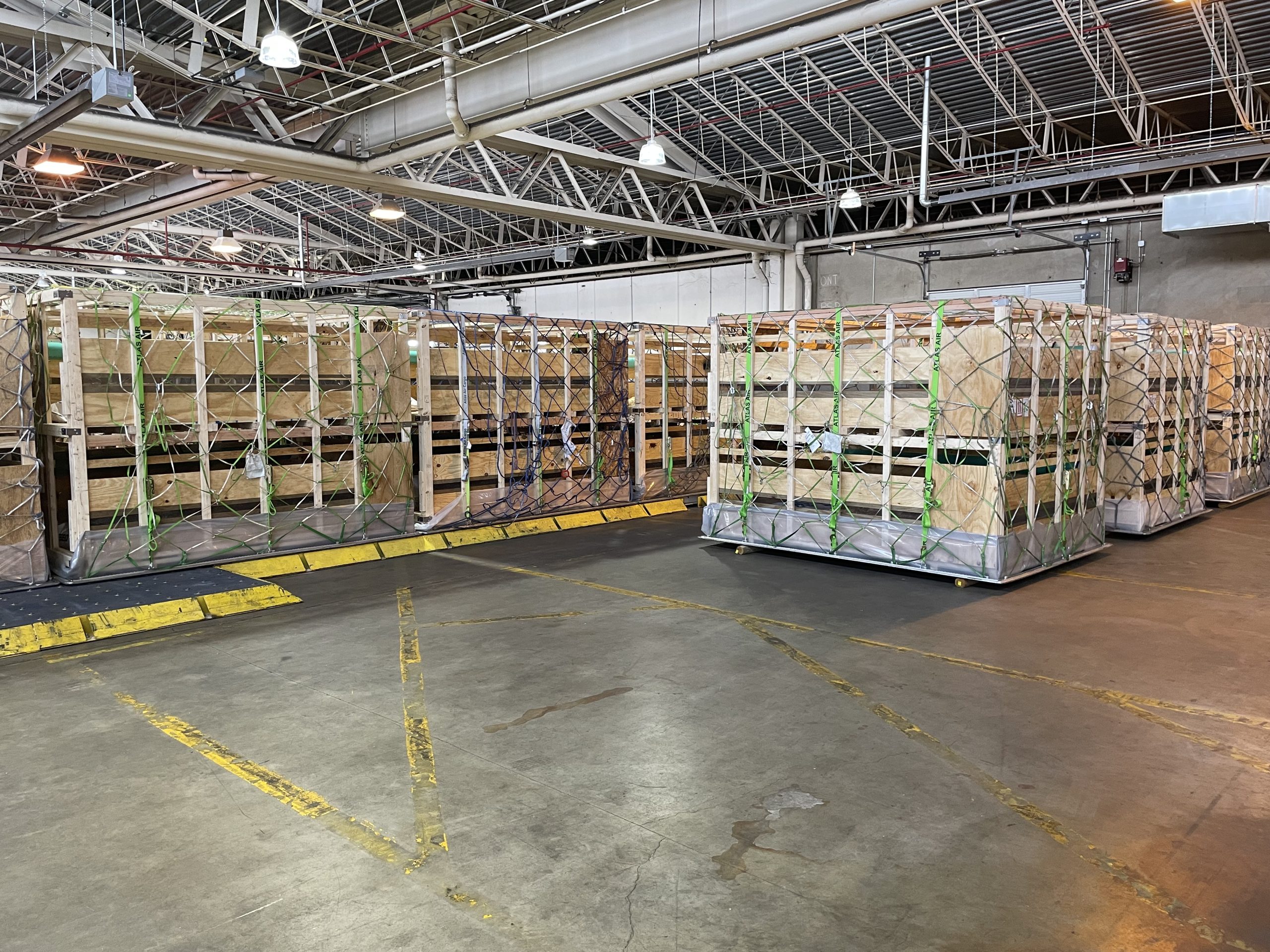The final piece of an extensive renovation was all that remained recently at the livestock export facility at St. Louis Lambert International Airport: the installation of rubber flooring to guard against the slips and falls of the thousands of hogs that will pass through the building each year or for any cattle and sheep the facility might also attract.
The rubber flooring was waiting in stacks of white plastic wrappers on the spotless concrete floor. “It’s the most expensive piece of the entire renovation project,” said Brian Kinsey, the assistant airport director in charge of marketing and business development. (Above) Crated animals await loading at Lambert International Airport’s livestock export facility courtesy of St. Louis Lambert International Airport.
The export facility—housed in a long warehouse-like building at one end of the airport’s grounds—is one of only a tiny handful of airport facilities in the country that are certified by the U.S. Department of Agriculture to handle livestock exports. It’s a business that Lambert executive director Rhonda Hamm-Niebrugge has targeted for further growth.
Even among that handful of airports that handle live animals, Lambert stands out. “We specialize in volume,” Hamm-Niebruegge told the High Plains Journal. “Our facility can accommodate full airplane loads. That’s filling up a cargo 747 with as many as 900 hogs.”

The covered building was originally constructed for traditional cargo rather than animals. The recent renovations have added amenities for workers as well: private work spaces and conference rooms, bathrooms/showers and quiet rest areas for tired truck drivers. Moveable modular pens can be reconfigured as needed. Some crated animals can move on rollers straight to dollies for a short trip out to awaiting cargo planes.
When American Airlines vacated the structure, Hamm-Niebruegge saw a cargo opportunity. She grew up on a farm (as did her husband), and she knew from attending ag and farm shows that there was a need for more livestock air export facilities. Lambert works closely with USDA officials, who have to approve each time the facility is used and are always present during each shipment.
Animal welfare is paramount during transit through the facility and out to the cargo planes. That means stressing the animals as little as possible. “There is a lot of investment made in moving these animals, and all need to arrive at the destination in great condition,” Hamm-Niebrugge said.
Hamm-Niebruegge believes that Lambert offers a clear advantage over other airports due to facility upgrades that focus on the wellbeing of both people and animals and because the transit to the cargo plane is shorter in distance and in time. The covered building is temperature-controlled, with ceiling fans and ductwork that can blow chilled air onto the animals during warm summer days. The animals can be moved directly from the trucks to the shipping crates, weighed and rolled out of the building onto dollies that take the crates on a short ride to the awaiting cargo plane.
“Oftentimes the animals’ feet never touch the ground,” Kinsey said.

The trips are arranged by a niche class of animal shipper/freight forwarders. It’s a specialized business that few know about, even in the ag world. The airport charges fees for the use of the facilities, plus a landing fee for the cargo plane.
During the COVID-19 pandemic, air freight became a critical mode of transportation as other modes were restricted. Lambert’s air cargo shipments (of all kinds) doubled from about 125 million pounds a year to twice that.
While the amount of freight dropped back some after the worst of the pandemic subsided, the numbers of shipments are back on the rise again.
“Livestock movements will be an increasingly important part of the airport’s cargo success.” Hamm-Niebruegge said. She points out that the facility has a lot of room to expand and expects to be shipping both beef and dairy cattle at some point.
David Murray can be reached at [email protected].



